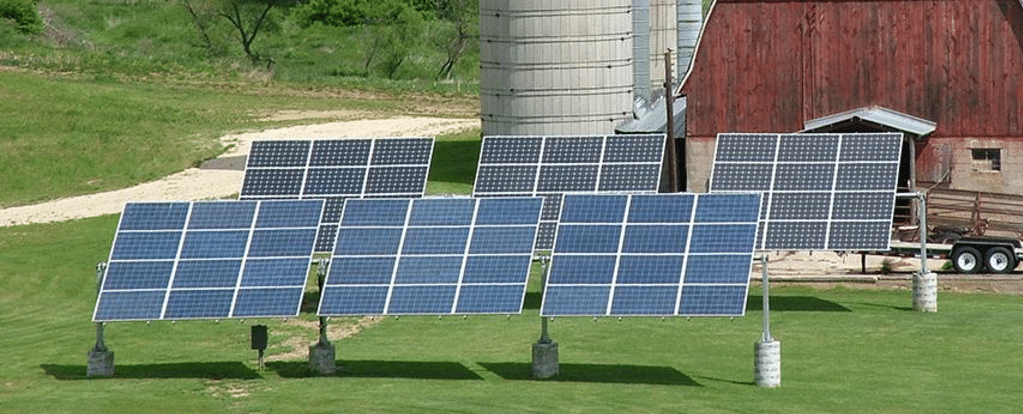Rapid changes are under way for local solar and storage, as innovations drive down costs and create new markets for hardware and services, says Bill Nussey in the book Freeing Energy.
The former technology CEO and venture capitalist describes dozens of local energy opportunities, projecting that each represents a market of at least a billion dollars of annual revenue.
Nussey developed his thinking through interviews with hundreds of solar and storage industry participants. While many of the technologies he describes will be familiar to pv magazine readers, his public assessment that they represent billion-dollar opportunities is new.
Nussey says he wrote the book for the “ten thousand innovators needed” to speed the local energy transition. Even so, people already working in the industry are likely to find Nussey’s vision for the growth of local energy engaging, along with the “shop talk” throughout the book.
Nussey also presents a few innovation opportunities related to large-scale solar, arising from overbuilding of solar farms, or sizing them to power short winter days. Overbuilt solar farms will produce “cheap excess summer electricity” that will “spawn massive new industries” that operate each summer, Nussey says, such as desalination, indoor agriculture, or production of hydrogen and ammonia.
In a nod to policy, Nussey calls for “immediate attention” to slashing soft costs for local solar and storage installations—which helped Australia reach 20% residential solar uptake; instituting dynamic customer pricing to reduce electricity bills; and requiring new buildings to be ready for solar and storage installations.
Utilities in the future
Nussey says that an excess kilowatt-hour from rooftop solar is worth whatever a neighbor would otherwise pay the utility for a kilowatt-hour, “minus a small fee for transaction processing and using the grid for delivery.” Thus one of the billion-dollar opportunities Nussey foresees is transactive markets for electricity trading.
Continuing cost reductions, Nussey says, will make “local energy” the best way to provide most residential and commercial energy for the 70% of Americans who live in suburbs and rural areas.
Already cost reductions have led Hawaii to “embrace batteries” and “redefine the utility’s role as a backup provider,” Nussey says, calling Hawaii’s experience a “postcard from our future.”
In the long run, no matter how much utilities spend on lobbying, Nussey says, ultimately they will be unable to “withstand the pressure” from customers who will be “unwilling to pay two or three times more” for electricity than it costs to generate electricity themselves, or to buy electricity from a neighbor in a local market.
“The political winds will shift,” Nussey predicts, estimating that utilities have a 10-year window to “embrace local power” or else likely be “absorbed into more forward-thinking” utilities.
Stories
To support his views on electric utilities, Nussey presents examples of disruptive technologies displacing incumbents, such as ridesharing services outcompeting taxi monopolies. Throughout the book, he also recounts stories drawn from the history of technology, to help the reader grasp how the technology environment for local energy is changing.
Solar advocates may find a resource in the book’s arguments dispelling several “myths” raised by solar opponents. Nussey found only one “truth” in opponents’ claims, namely that solar power is intermittent. But that issue can be solved, he says, by reducing the cost of storage, overbuilding solar, tapping electric vehicle batteries using vehicle-to-grid technology, pairing solar with wind, and other measures.
Local solar provides 18 benefits, Nussey adds, including grid benefits. One benefit is a reduction of 1400 to 2100 pounds of carbon dioxide per month for a typical home’s rooftop solar system. If coal power is displaced, that rooftop system also prevents the creation of 185 pounds of coal ash per month.
This content is protected by copyright and may not be reused. If you want to cooperate with us and would like to reuse some of our content, please contact: editors@pv-magazine.com.








By submitting this form you agree to pv magazine using your data for the purposes of publishing your comment.
Your personal data will only be disclosed or otherwise transmitted to third parties for the purposes of spam filtering or if this is necessary for technical maintenance of the website. Any other transfer to third parties will not take place unless this is justified on the basis of applicable data protection regulations or if pv magazine is legally obliged to do so.
You may revoke this consent at any time with effect for the future, in which case your personal data will be deleted immediately. Otherwise, your data will be deleted if pv magazine has processed your request or the purpose of data storage is fulfilled.
Further information on data privacy can be found in our Data Protection Policy.